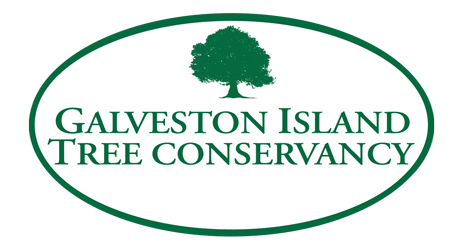Our Resilient Oaks
By Margaret Canavan
GITC Board Member, Galveston Co. Master Gardener
Courtesy: Galveston Daily News
The Live Oak, Quercus virginiana, has long been a symbol of Galveston, almost as iconic as the beachfront. The demise following Hurricane Ike of large Oaks in the historic east end neighborhood and along Broadway has caused some folks to question their survivability in our coastal environment.
So why, you may ask, are we replanting Oaks on Broadway? It turns out that they were actually remarkably resilient during Ike’s wrath. There are two primary reasons. If you look around town you will see many survivor Oaks still standing in our neighborhoods. Also, we are following a replanting blueprint that was approved by both the Texas Department of Transportation (TXDoT) AND the Texas Historical Commission. Not an easy feat!
The Texas A&M Forest Service, along with our local Texas AgriLife Extension Service and Master Gardener volunteers, completed an extensive survey of tree survival following Ike. They discovered that few tree species survived the devastating 24-hour salt-water submersion that felled the trees on and near Broadway, the east end, and other very low-lying areas. In areas with less extensive flooding, Oaks had a better survival rate than other species. They are slow-growing and durable trees that provide shade, wildlife habitat, and year-round greenery and cooling for our streets and homes. So even though our NeighborWoods projects have allowed and encouraged a more diverse planting, Oaks are still important to our urban forest.
The second reason for replacing Oaks on Broadway is that we are following a plan that was carefully shepherded through a rigorous approval process that took months. Broadway is eligible for historical record and therefore is subject to oversight by the Texas Historical Commission. The City of Galveston maintains the esplanades, but was required to complete an historical landscape plan in order to replant Broadway. This included providing the history of Broadway, recommended replanting plans, and maintenance records. The plan was approved by all involved entities and adopted by the Galveston City Council, and now serves as the blueprint for restoration.
This plan calls for the replacement of both palms and oaks from 59th to 11th Streets and then optionally, just palms from there to the Seawall. It also includes recommendations for lighting and street signs. The oleanders that formerly lined Broadway were removed at the request of TXDoT several years ago due to their size, and were replaced by the current layout of dwarf oleanders and end cap gardens. The layout was developed cooperation with the volunteer Broadway Beautification Committee.
To date the Galveston Island Tree Conservancy, using funding from private donations, has replanted nine blocks of Broadway with the largest trees available and practical to plant. Galveston City Council recently voted to fund $140,000 from sales tax revenue to this project. The Broadway plan is available here.
While our new Oaks will not yet be as grand as those we lost, those already in the ground are on their way. Give them time and they will be magnificent!
Hurricane Ike caused the loss of 40,000 trees on Galveston Island. The Galveston Island Tree Conservancy was formed to address that loss and to date has replaced almost 11,000 through grant-funded plantings and giveaways, with more planned.
———
“Tree Stories” is an ongoing series of articles about island trees, tree care and tree issues. If you have or know of a special tree on Galveston Island that should be highlighted, email treesforgalveston@gmail.com. Margaret Canavan is a Galveston resident, a Galveston County Master Gardener, and a member of the Galveston Island Tree Conservancy Board.

